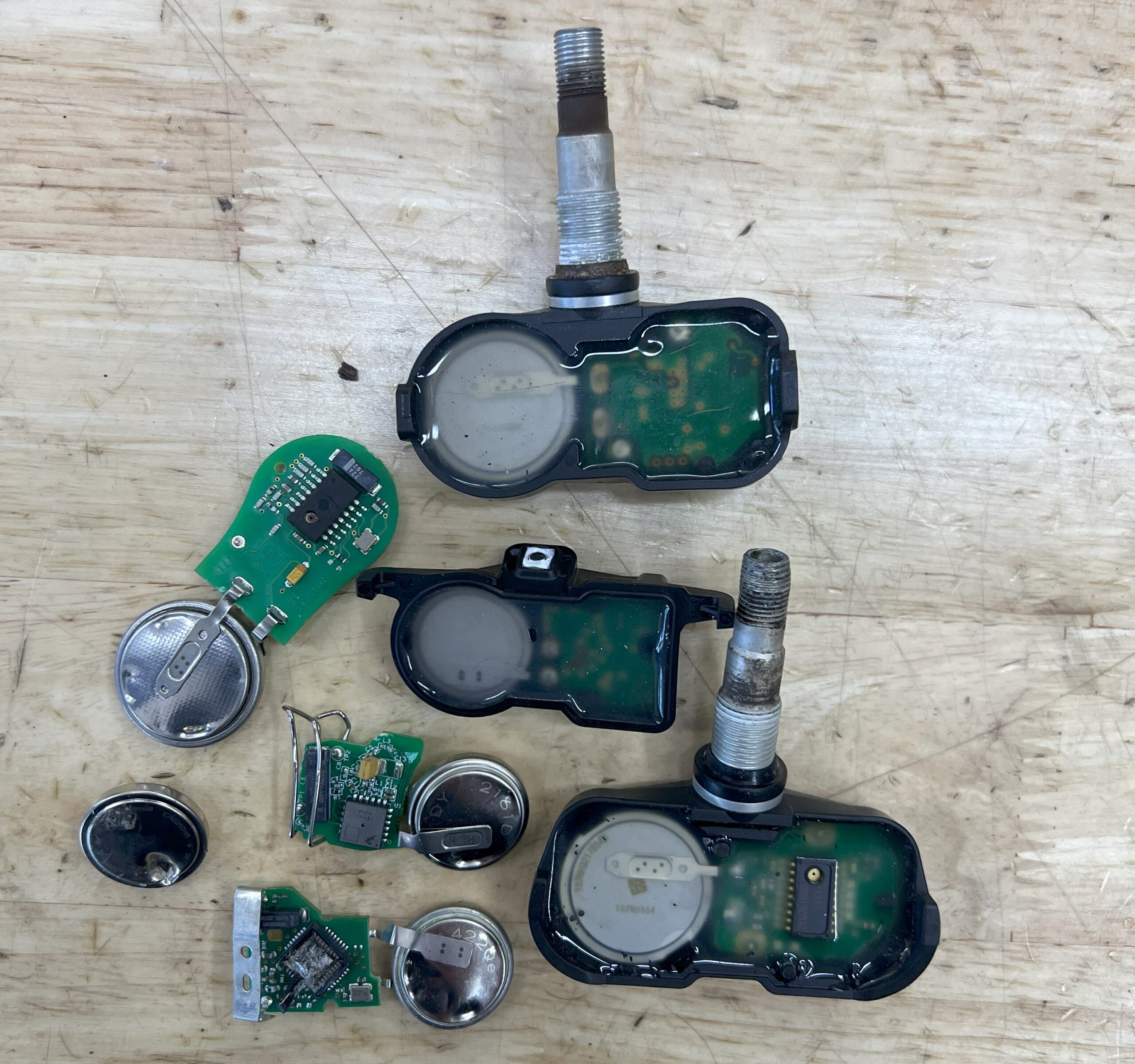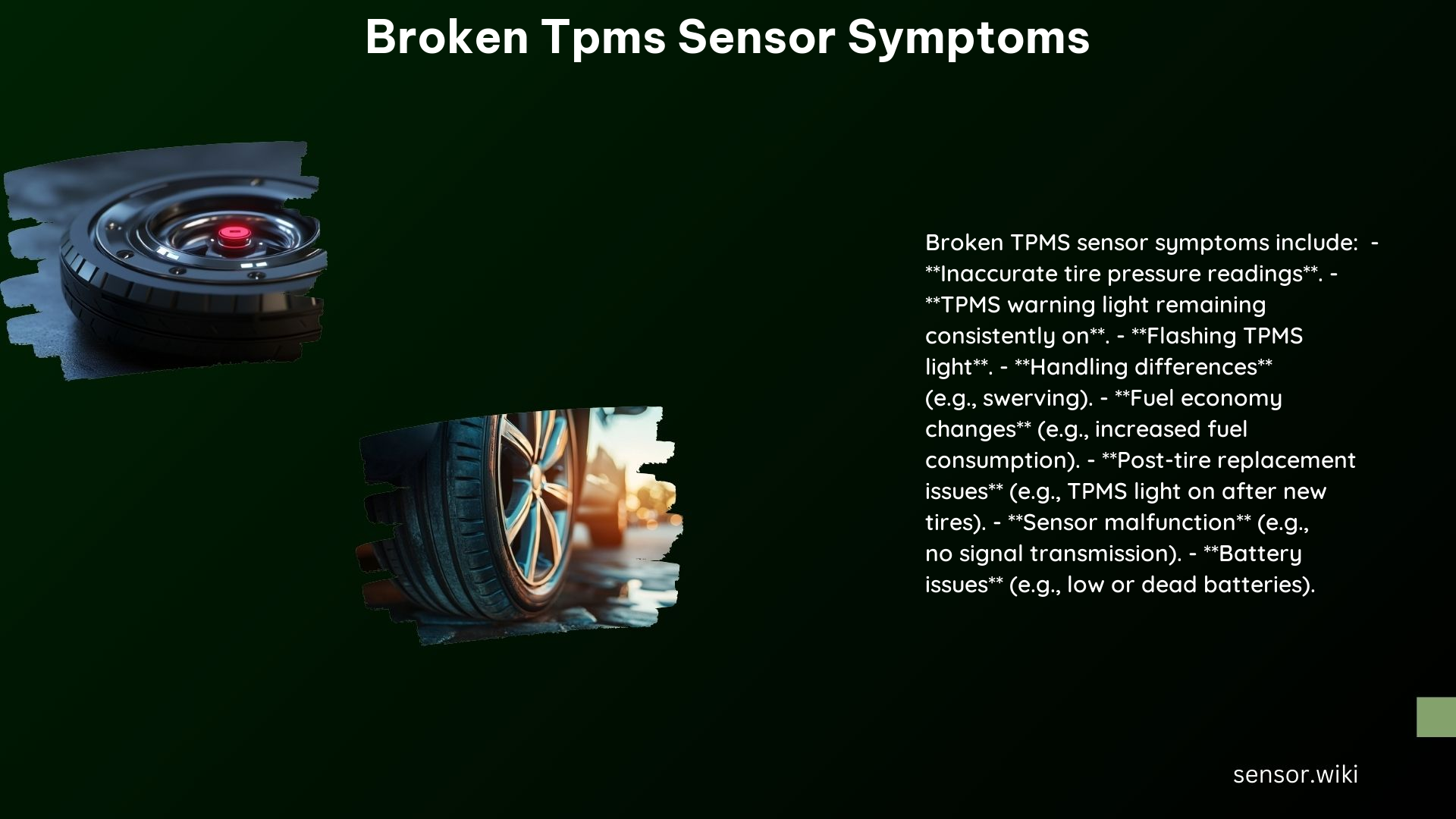The Tire Pressure Monitoring System (TPMS) is a crucial safety feature in modern vehicles, designed to alert drivers when tire pressure drops below a safe level. However, when the TPMS sensor malfunctions, it can lead to a range of issues that can impact your vehicle’s performance, fuel efficiency, and even safety. In this comprehensive guide, we’ll explore the common symptoms of a broken TPMS sensor and provide you with the necessary information to diagnose and address the problem effectively.
Common Symptoms of a Broken TPMS Sensor

1. Blinking or Solid TPMS Light
One of the most obvious signs of a malfunctioning TPMS sensor is the illumination of the TPMS warning light on your dashboard. This light may blink or remain solid, indicating a problem with the sensor. The TPMS light typically activates within 60-90 seconds of the sensor detecting an issue, such as a significant drop in tire pressure or a sensor failure.
2. Inaccurate Tire Pressure Readings
If the TPMS is displaying incorrect pressure readings for one or more tires, it could be a sign of a faulty sensor. This can lead to incorrect warnings or a complete lack of warnings, putting you at risk of driving on under-inflated tires without being alerted.
3. Handling Differences
If you notice changes in your vehicle’s handling, such as swerving or experiencing flat tires without a corresponding TPMS alert, it could indicate that the sensor is failing to detect pressure drops accurately.
4. Fuel Economy Changes
An unexpected increase in fuel consumption can be a symptom of a broken TPMS sensor. If the sensor is not properly detecting under-inflated tires, you may be driving on tires with suboptimal pressure, leading to increased rolling resistance and reduced fuel efficiency.
5. Post-Tire Replacement Issues
If the TPMS light turns on after you’ve had new tires installed, it could be due to several factors, including improper tire installation, sensor damage during the process, or a need to reset the TPMS system.
Diagnosing a Faulty TPMS Sensor

1. TPMS Scan Tool
Using a TPMS-specific diagnostic tool can help you identify various problems with the system, such as a drained battery, wiring issues, or sensor malfunctions. These tools can provide detailed information about the status of each individual sensor, allowing you to pinpoint the source of the problem.
2. Air Filling and Releasing
Fill each tire to the recommended pressure, then gently release air from one tire at a time. Monitor the car’s display panel to see if the TPMS system triggers a warning for the affected tire. If the system fails to detect the pressure drop, it could indicate a faulty sensor.
3. Digital Pressure Gauge
Measure the air pressure of each tire using a digital pressure gauge and compare the readings with the information displayed on your vehicle’s dashboard. If the readings differ, it may suggest a problem with the TPMS sensor.
4. Visual Inspection
Carefully inspect the TPMS sensor for any signs of physical damage, corrosion, or dirt buildup, which can cause malfunctions. Look for cracked or damaged sensor housings, as well as any signs of water intrusion or contamination.
Technical Specifications and Replacement
Battery Life
TPMS sensor batteries typically have a lifespan of 5-10 years, depending on usage and environmental conditions. As the battery nears the end of its life, the sensor may start to malfunction, leading to the symptoms described earlier.
Replacement Cost
The cost of replacing all four TPMS sensors can range from $200 to $800, depending on the make and model of your vehicle. It’s important to note that the replacement cost may also include the labor required to access and install the new sensors.
